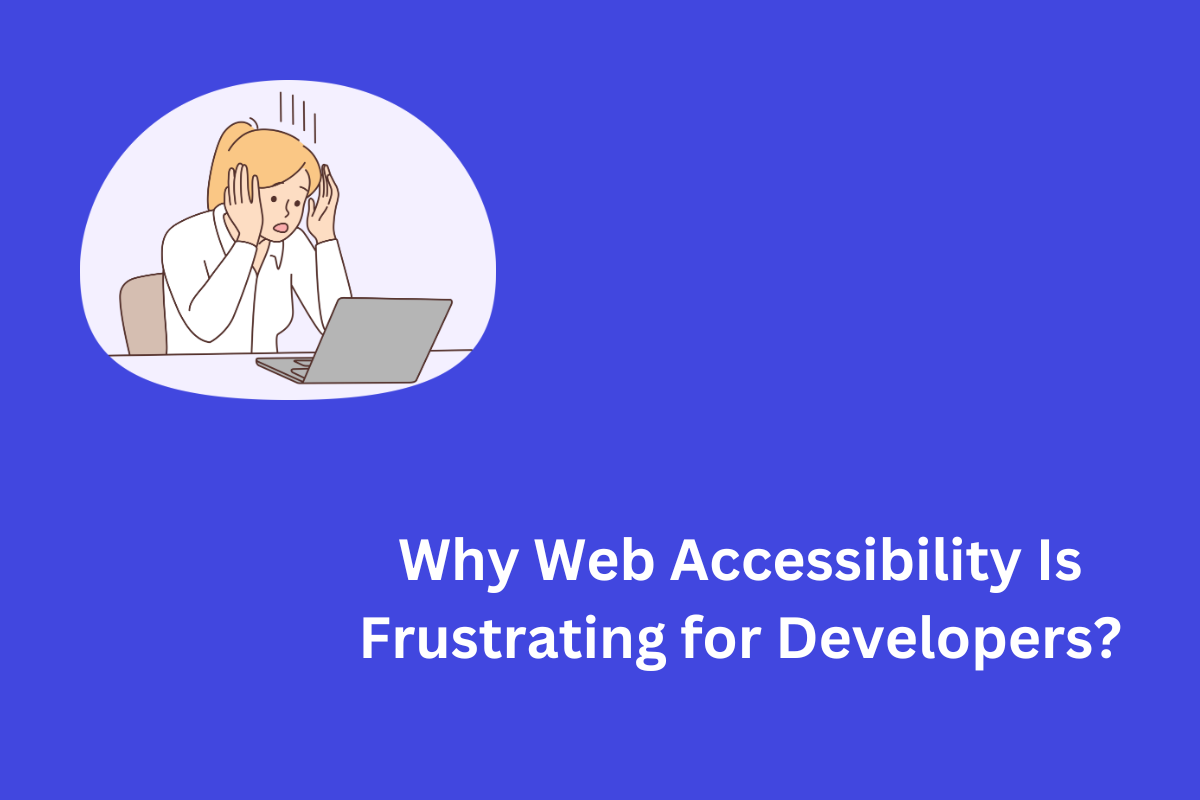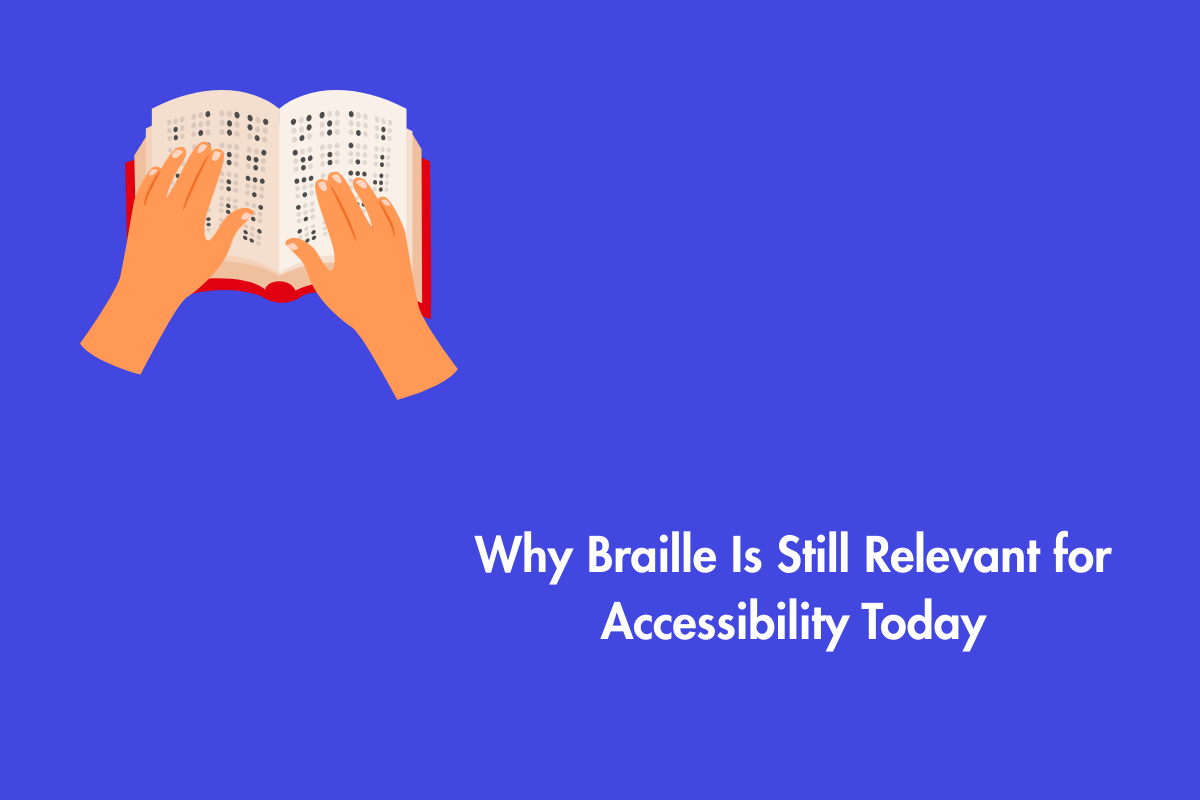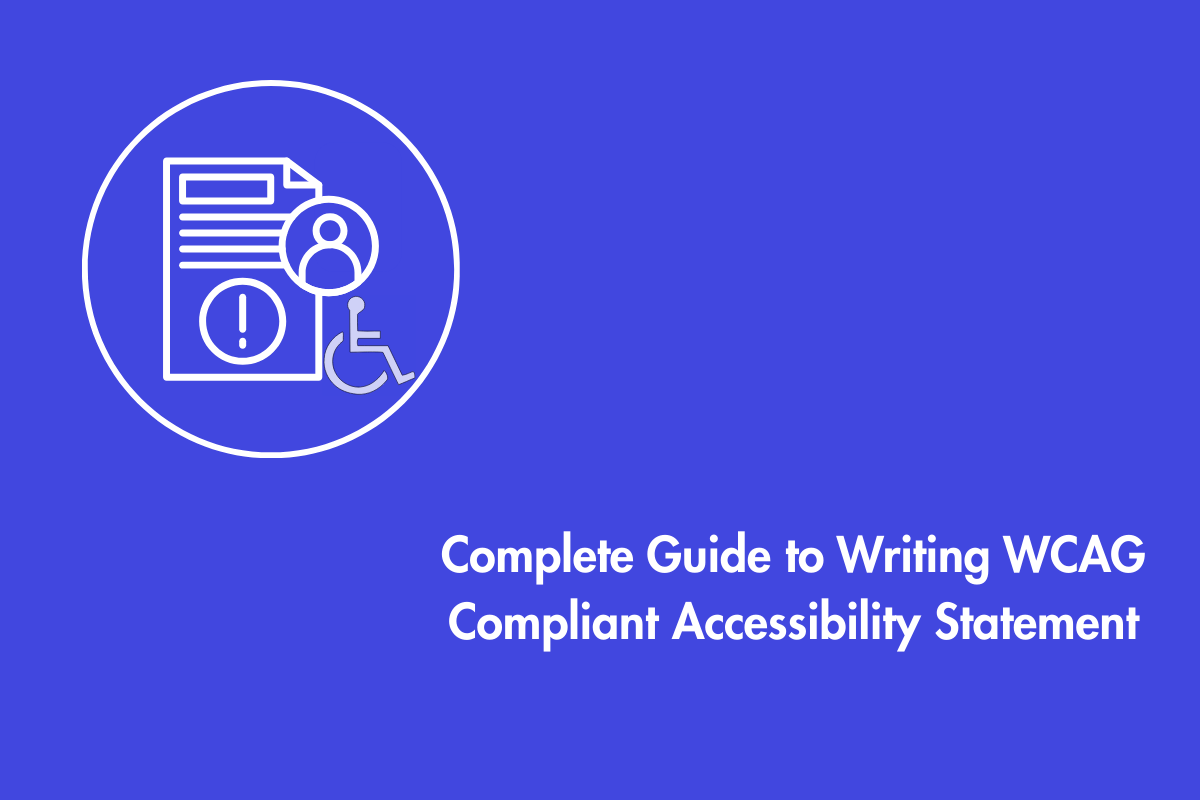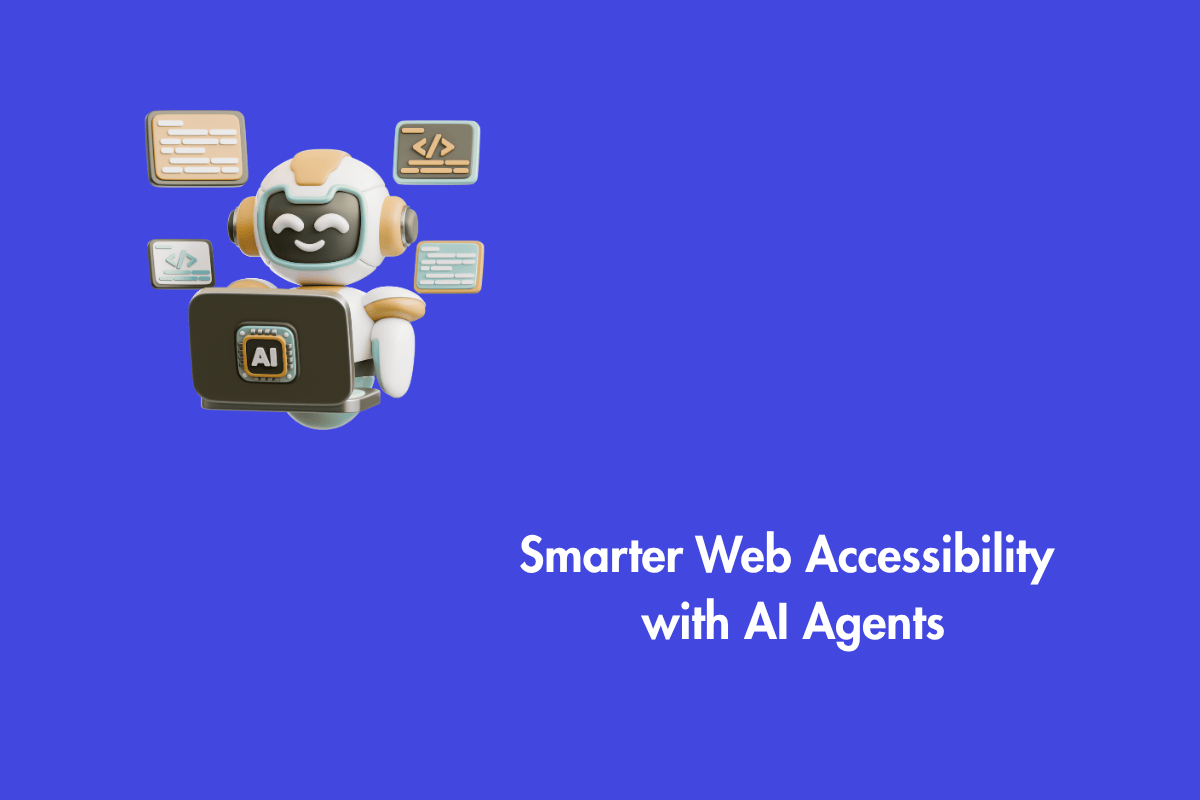Web accessibility is an essential component of your website, yet many individuals either overlook its importance or don’t prioritize it enough. Developers can face real hurdles as they worry it might disrupt their usual processes. Designing accessible websites can be especially tricky for those who are not yet familiar with its key concepts. Moreover, less experienced developers might feel a bit overwhelmed by the range of challenges they face.
Fortunately, it’s not all bad news. Accessibility is like baking a cake. At first, it might seem challenging, but once you understand the basics, you can whip up a delightful cake using the ingredients you love. In this blog, we will explore brief topics associated with accessibility that seem frustrating to developers, but together we’ll work to make it manageable.
Table of Contents
Why Is Making Websites Accessible Complex?
Accessibility benefits users with disabilities and enhances the user experience for all users. However, many misconceptions about accessibility might discourage organizations from pursuing it.
Ask any developer, and they’ll agree: when coding, adding features, and continuously testing, having clear and stable requirements is essential.
Unfortunately, digital accessibility is often mistakenly seen as just another feature rather than a core principle. It’s treated as a final checklist item—something to address at the end of a project or retroactively fit into the finished product. This approach is flawed and results in unnecessary extra work.
Let us focus on understanding real problems faced by developers:
1. Technical Complexity and Inconsistent Implementation
Developers face numerous technical challenges when implementing accessibility:
Browser and Technology Inconsistencies
Browsers and assistive technologies interpret accessibility elements differently. What works well in one setting may not work in another. Inconsistency demands thorough testing and various solutions.
Complex Coding Requirements
- Implementing accessibility typically necessitates following semantic HTML structure and Advanced ARIA attributes.
- Maintaining keyboard navigation with complex JavaScript interactions
- Dynamic content updates that notify screen readers.
For developers, ARIA might seem like the go-to solution for accessibility challenges. However, using ARIA comes with responsibility. You need to test it thoroughly, and if misapplied, certain ARIA attributes can make a website completely unusable for assistive technology users.
2. Limited Understanding and Training
Most computer science and web development programs hardly discuss accessibility. Developers generally learn about accessibility through:
- Personal research
- On-the-job training and specialized courses
- Online classes
Therefore, developers typically may not comprehend accessibility’s nuances due to decentralized learning.
3. Tool and Framework Limitations
Popular development frameworks and tools frequently lack accessibility. For complete accessibility:
- Frameworks like React, Vue, etc. may need extra libraries.
- CSS frameworks often lack accessible color contrast options.
- Many JavaScript interactions undermine screen reader compatibility.
4. Diverse User Needs
Users with visual, auditory, or cognitive impairments may have different requirements, depending on their impairments. This variability factor can be challenging for developers who must create different interfaces for user scenarios. Creating a single solution for all users without compromising usability is difficult.
Developers must master accessibility and modify technology to fulfill inclusive design guidelines.
Web accessibility standards are continually evolving, requiring developers to adopt new techniques, update existing projects, and keep up with emerging technologies and user needs. This constant evolution can create a challenging learning curve.
5. Misunderstanding WCAG
While WCAG compliance is essential for businesses to meet legal requirements like the ADA, treating it as just a checklist can lead to poor user experiences.
WCAG isn’t entirely objective—many criteria require human judgment and a deep understanding of accessibility principles. Additionally, meeting compliance standards doesn’t necessarily mean a website or app is easy to use.
WCAG is complex, and developers who treat it as a strict rulebook may feel overwhelmed, losing sight of the ultimate goal: building accessible, user-friendly experiences for real people.
Strategies to Overcome Gaps
1. Comprehensive Education
Developers can address accessibility issues with specialized training programs, certification courses, attending accessibility-focused conferences, and joining online communities about inclusive design.
Platforms like W3C School also offer courses on WCAG.
2. Proactive Design Integration
Organizations should prioritize accessibility in their projects by including accessibility requirements in initial planning, conducting regular audits, involving disabled users in testing and design processes, and creating reusable, accessible component libraries.
3. Leveraging Advanced Tools
Utilize advanced accessibility tools such as automated testing platforms, screen reader simulations, keyboard navigation testers, etc. Furthermore, involving people with disabilities in the testing team helps identify and understand the barriers they encounter.
Organizations can assist developers by offering comprehensive accessibility training. They can create cross-functional teams with experts that helps them set setting clear accessibility standards. Lastly, recognizing and rewarding inclusive design initiatives.
Advantages of Web Accessibility
Web accessibility ensures that websites, tools, and technologies are designed for inclusive use, allowing people with disabilities to perceive, understand, navigate, and contribute to the web.
Additionally, accessibility benefits a wider audience, such as mobile users, older adults, individuals with temporary or situational limitations, and those with slow or limited internet access. Here are a few key points to understand further why it’s important and why developers should focus on an inclusive web design:
- Enhances User Experience: Building accessible websites provides a better overall user experience, including improved navigation, and better readability.
- Increases Audience Reach: Ensuring accessibility allows developers to make digital products available to a wider and more diverse audience.
- Improves SEO Performance: Accessible websites are prioritized in search engine rankings, leading to a better visibility
- Ensures Legal Compliance: Knowledgeable developers help organizations comply with accessibility regulations such as the ADA or Section 508 standards.
- Strengthens Brand Identity: Inclusive design enhances brand identity and fosters trust among users.
- Saves Costs Over Time: Addressing accessibility from the start minimizes the need for costly future fixes and redesigns.
- Fosters Innovation: Developers who focus on creating accessible solutions often think outside traditional boundaries.
Wrapping up
Integrating accessibility early in the development process may seem overwhelming and even frustrating for developers. While it might appear tedious or like an added technical burden, it ultimately saves time and resources in the long run.
Building an inclusive culture in your organization will help developers understand the barriers faced by people with disabilities. This will help them create innovative solutions that benefits all users as accessibility fosters enhanced user experience. Prioritizing accessibility not only improves usability but also demonstrates a genuine commitment to your users. In today’s profit-driven landscape, it is priceless.



